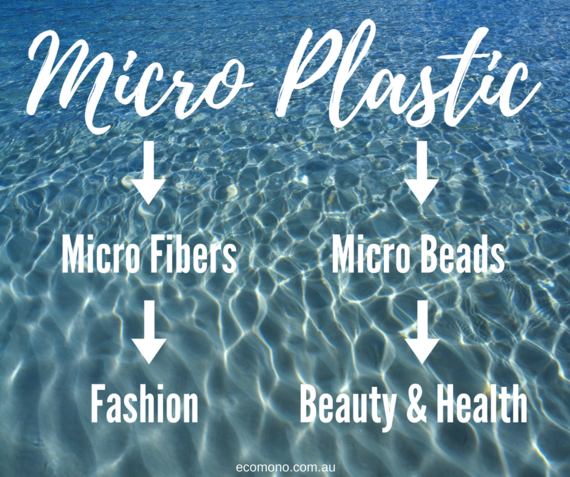
WHAT ARE MICROFIBERS AND MICROBEADS? I'M CONFUSED.
Microplastic has been getting a lot of press recently and I must admit, I was't quite sure what it was or where it came from.
So, I delved into the big scary world of google to do some research. My search uncovered so much content surrounding recent studies on microplastic. I suddenly became completely overwhelmed. It made me think, how are we (the general public) supposed to raise awareness or do our bit to help if we don't understand what it is?
After reading multiple articles on the topic, I have jotted down my understanding of the subject into a few small paragraphs.

What is Microplastic?
Most of us understand the issues we have with plastic polluting the environment and marine wildlife. We see it on the news and via social media so often, that it is pretty hard to ignore. The video of a straw being pulled from a turtles nose get's me every time. Not to mention birds getting caught up in fishing nets and waste from cruise ships being washed up on our beaches.
However, that's just the plastic we can see. There's also a type of plastic that the naked eye can't necessarily see, microplastic. One form of microplastic is microbeads, these come from everyday heath and beauty products such as toothpaste, body wash and exfoliants. These tiny pieces of plastic used in beauty products are designed to go down the drain but they are often too small to be filtered by filter systems. Microplastic waste also includes synthetic microfibers (less than 5mm in length) that detach from our synthetic clothes during washing. Synthetic fabrics include polyester, acrylic and nylon, which means most of us own clothing made from plastic. Microplastics may be small, but they're causing big problems for our environment and our health.
What is the environmental damage of Mircoplastic?
Microbeads from health and beauty products and microfibers shed from our clothes, work their way from our sinks, showers and washing machines. Then because they are so small, they pass through our filter systems and finish up in the ocean.
Microplastic is not only polluting our water, it's littering shorelines and contaminating food systems. Small fish mistake the microplastic for food and eat it. Then as we go up food chain, who else eats fish? Humans. If you eat fish, there's a chance that this type of plastic is finishing up in your stomach. Yuk!
What does this mean for the fashion and beauty industry?
Health and beauty companies use microbeads in their products due to their effective exfoliating properties. Not only are microbeads a common ingredient across the beauty industry, there are thousands of them in each product. Erica Vega, training manager at Lush Cosmetics told TeenVogue "A single tube of cleanser can contain approximately 300,000 microbeads".
Now, microbeads are now banned in the US, with other countries such as Canada and Australia starting to take action. The UK have stated microbeads will be phased out by 2017 with some health and beauty companies already starting the process. The process is very complex and requires a lot of research and development into the natural raw material substitutes.
As for microfibers; eco-friendly retailer Patagonia explains,"such is yet unknown. For example, we don't know the extent of the harm to organisms and we don't understand how any negative impacts from synthetic microfibers might compare to the broader issue of ocean plastic pollution. We are just now getting an early sense of how key variables, such as fabric quality or washing technology, may affect the path of microfibers from our homes to our oceans".
What can we be doing to help?
As we now know, solutions exist to eliminate microbeads from our homes. There are natural alternatives with the same exfoliating properties, but with the added bonus of being environmentally friendly. When shopping for health and beauty products be sure to choose the natural options.
While the health and beauty industry are able to replace microbeads with natural alternatives, the fashion industry faces a more difficult situation. Alternative fibers such a natural cotton and wool do not have the same performance attribute of synthetic materials. However, until their is a solution you can change some washing habits to help reduce the number of microfibers making their way from your home to our ocean:
1. Wash your clothes less; you don't need to wash your clothes as much as you probably do.
2. Invest in a wash bag; place you dirty laundry into the wash bag and pop it in the machine.
3. Purchase a lint filter for your washing machine, similar to how we capture lint from our dryers.
This September The Huffington Post UK Style is focusing on all things sustainable, for the second year running. Our thirst for fast fashion is dramatically impacting the environment and the lives of thousands of workers in a negative way. Our aim is to raise awareness of this zeitgeist issue and champion brands and people working to make the fashion industry a more ethical place.
We'll be sharing stories and blogs with the hashtag #SustainableFashion and we'd like you to do the same. If you'd like to use our blogging platform to share your story, email ukblogteam@huffingtonpost.com